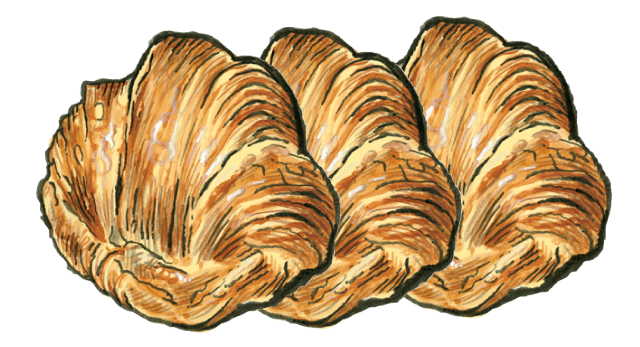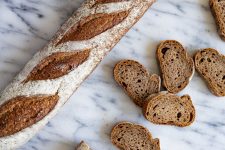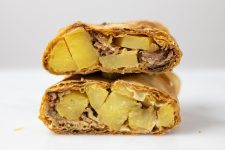Puff Pastry 101

Recently, I attended the puff pastry class at BAKE!, the baking school run by Zingerman’s Bakehouse. I learned a lot about how to make great puff pastry and what to do with it, and I’ll have more to say about that soon. But for now, let’s start with the basics.
How is puff pastry different from regular pie dough?
Ingredient-wise, they’re very similar: butter, flour, water, salt, and a smidgen of lemon juice. The difference is in how the ingredients are mixed together. In standard pie dough, you cut the butter into the flour, then stir in ice water until it forms a dough. For puff pastry, you make a butter-based dough, and a flour-based dough, and then you wrap the flour-dough around the butter-dough. Then you roll out the dough into a long, thin rectangle, fold it in three like a letter, and repeat. In total, you roll and fold five times. Fewer than five rounds won’t make enough layers; more than five and the layers will start to smudge into each other.
What makes the pastry puff?
All that folding creates the dozens of paper-thin layers of flaky pastry. It’s those layers that make the pastry puff: when it bakes, water evaporates from the dough and tries to rise as steam, but it gets trapped between the layers of dough, creating the rise.
As you work with the dough, the butter gets warmer. If the butter melts, it will mix into the flour dough, combining the distinct layers you’ve worked so hard to create. If the layers meld together, the pastry won’t puff. To avoid this, it’s good practice to let the dough rest in the fridge between rounds of folding and rolling.




Zingerman’s Art for Sale